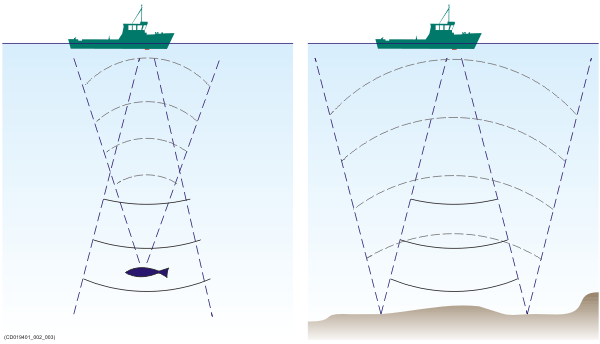TVG (Time Variable Gain) function
TVG (Time Variable Gain) compensates for the loss of acoustic energy due to geometric spread and absorption. This makes the targets with the same strength appear with the same intensity independent of their physical distance from the
transducer.

How to open
This function is opened from the Active menu.
The EK80 transmits high energy sound wave pulses into the sea. A flat bottom reflects the transmitted wave as if it was a mirror. The propagating energy is spread over a larger and larger area as it travels down to the bottom and up again. The energy is spread over a four times larger area every time the travel distance doubles.

When a sound pulse is travelling from the transducer through the water it will undergo geometrical spreading.
A large school of fish reflects sound waves similarly. This type of spreading is referred to as square-law or 20 log TVG (Time Variable Gain) spreading.
When a school of fish covers the whole acoustic beam cross section, the received echo will increase with range simply because
the acoustic beam cross section increases with range.
In addition to the geometrical spreading, sound energy is absorbed in water. Absorption is higher in salt than in fresh water and increases with the operating frequency. The received echo must also be compensated according to the absorption.
The combined compensation for the geometrical spreading and absorption is the TVG
Details
TVG
Select the TVG setting you want to use. Several TVG compensation settings are available.
| • | No TVG: TVG compensation is not implemented. This option is hardly ever used. |
| • | Sv (20 Log): Volume backscattering strength |
| • | Sp (40 Log): Point backscattering strength |
Note
Before you can change a setting related to a echogram, you must click inside the echogram to activate it. The setting is by default only applied to currently selected echogram.
Apply to All
Select this box to use the chosen setting on all the echograms of the same type.